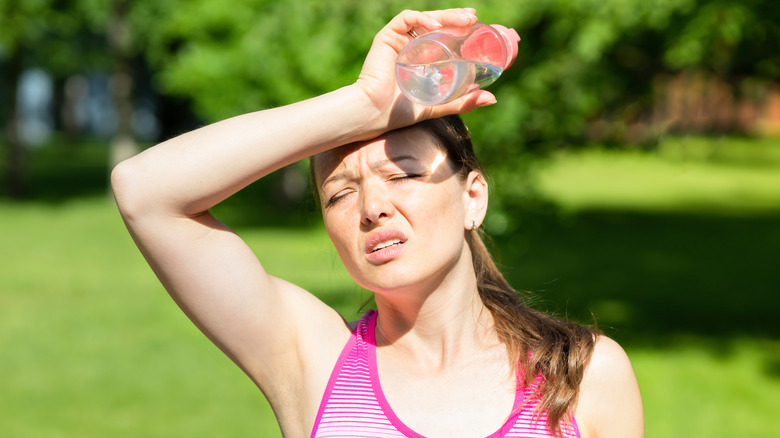Do You Burn More Calories Exercising When It's Hot Or Cold?
While everyone has an opinion on the best way to lose weight, it comes down to a simple formula, burn more calories than you consume (via Mayo Clinic). While there are conditions that can cause weight gain, such as Cushing syndrome or hyperthyroidism, and lifestyle factors, like hormones and stress, calories remain the biggest culprit.
According to Medical News Today, calories are both the energy your body derives from eating and drinking, as well as the energy burned during working out. In order to figure out how many calories per day you need, Harvard Medical School recommends that you multiply your current weight by 15. This will give you the number of calories per pound of body weight a moderately active person will need to stay at their current weight. Losing weight safely requires you to lower your daily calorie count by about 500 to 1,000 per day. When calorie consumption is either too low or too high, health problems arise.
The goal with calorie burning, as Prospect Medical points out, is to create what's called a calorie deficit, in which you burn more calories per day than you consume. One pound of fat, for example, is about 3,500 calories. So, in order to lose a pound a week, you would need to burn about 500 calories per day. There are a number of theories as to the best way to accomplish this, ranging from the best form of exercise to even what temperature is best to exercise in.
Heat and cold can both burn calories
Proponents of the idea that your body burns more calories when it's cold point to a process known as thermogenesis (via Barpath Fitness). Thermogenesis occurs when your body has to burn calories in order to stay warm and maintain its core temperature. Additionally, a 2014 study by the Garvan Institute of Medical shows that exercise in cold temperatures, as well as shivering, has the ability to turn white fat, which stores energy, into calorie-burning brown fat.
Working out in the heat forces your body to work overtime to keep your body cool, which also helps you burn more calories (via Healthline). However, much of the weight you'll lose under these circumstances will probably be water weight. Additionally, a 2016 study published in Sports Medicine showed that the body has the ability to adapt to warmer climates, making the impact of working out in the heat diminish over time.
While there are potential benefits to working out in both the hot and the cold, it's better to exercise in temperatures, ranging from 68 to 72 degrees Fahrenheit (via Livestrong). If you choose to work out in heat or cold, take precautions. While in the cold, check conditions, wear layers, and watch for signs of hypothermia. If it's hot, stay hydrated, wear sunscreen, and be mindful of what time you go out. As important as it is to stay healthy, it's also important to stay safe.


